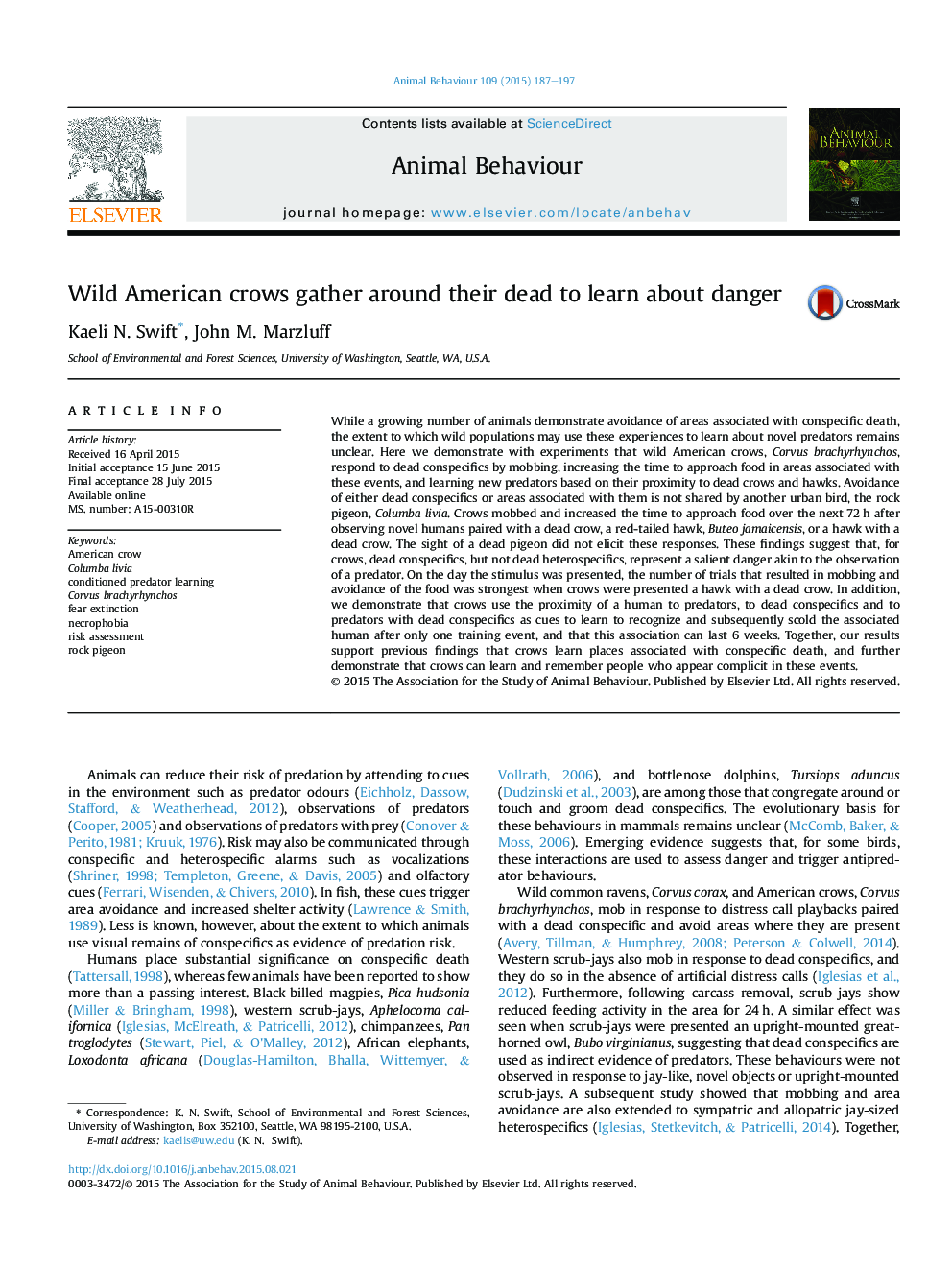| کد مقاله | کد نشریه | سال انتشار | مقاله انگلیسی | نسخه تمام متن |
|---|---|---|---|---|
| 8489600 | 1552219 | 2015 | 11 صفحه PDF | دانلود رایگان |
عنوان انگلیسی مقاله ISI
Wild American crows gather around their dead to learn about danger
ترجمه فارسی عنوان
کلاغ های وحشی آمریکا در اطراف مرده هایشان جمع می شوند تا درمورد خطر یاد بگیر
دانلود مقاله + سفارش ترجمه
دانلود مقاله ISI انگلیسی
رایگان برای ایرانیان
کلمات کلیدی
موضوعات مرتبط
علوم زیستی و بیوفناوری
علوم کشاورزی و بیولوژیک
علوم دامی و جانورشناسی
چکیده انگلیسی
While a growing number of animals demonstrate avoidance of areas associated with conspecific death, the extent to which wild populations may use these experiences to learn about novel predators remains unclear. Here we demonstrate with experiments that wild American crows, Corvus brachyrhynchos, respond to dead conspecifics by mobbing, increasing the time to approach food in areas associated with these events, and learning new predators based on their proximity to dead crows and hawks. Avoidance of either dead conspecifics or areas associated with them is not shared by another urban bird, the rock pigeon, Columba livia. Crows mobbed and increased the time to approach food over the next 72Â h after observing novel humans paired with a dead crow, a red-tailed hawk, Buteo jamaicensis, or a hawk with a dead crow. The sight of a dead pigeon did not elicit these responses. These findings suggest that, for crows, dead conspecifics, but not dead heterospecifics, represent a salient danger akin to the observation of a predator. On the day the stimulus was presented, the number of trials that resulted in mobbing and avoidance of the food was strongest when crows were presented a hawk with a dead crow. In addition, we demonstrate that crows use the proximity of a human to predators, to dead conspecifics and to predators with dead conspecifics as cues to learn to recognize and subsequently scold the associated human after only one training event, and that this association can last 6 weeks. Together, our results support previous findings that crows learn places associated with conspecific death, and further demonstrate that crows can learn and remember people who appear complicit in these events.
ناشر
Database: Elsevier - ScienceDirect (ساینس دایرکت)
Journal: Animal Behaviour - Volume 109, November 2015, Pages 187-197
Journal: Animal Behaviour - Volume 109, November 2015, Pages 187-197
نویسندگان
Kaeli N. Swift, John M. Marzluff,
